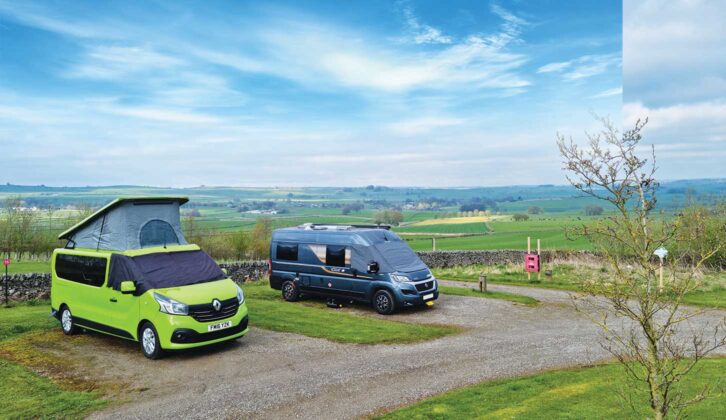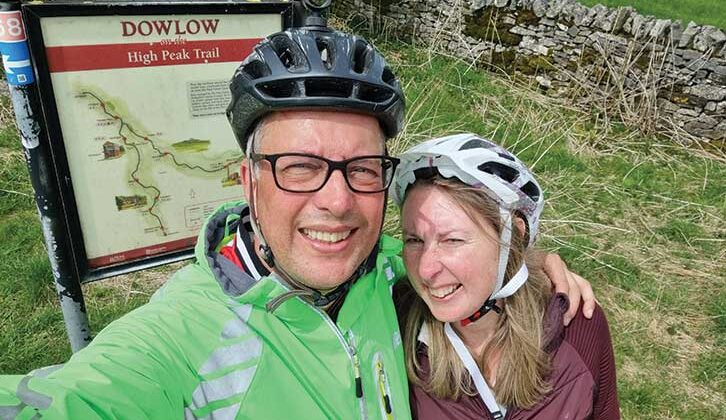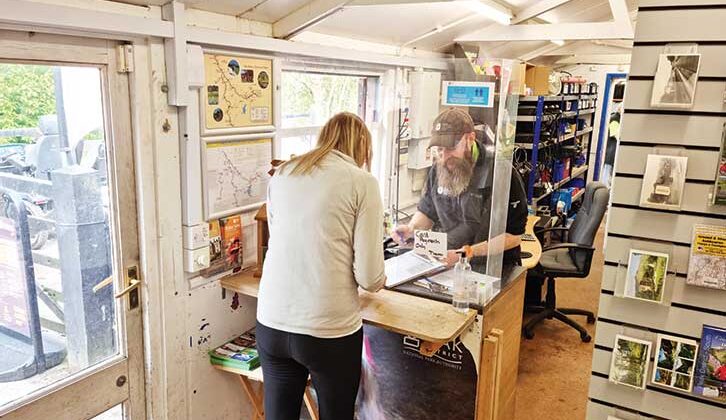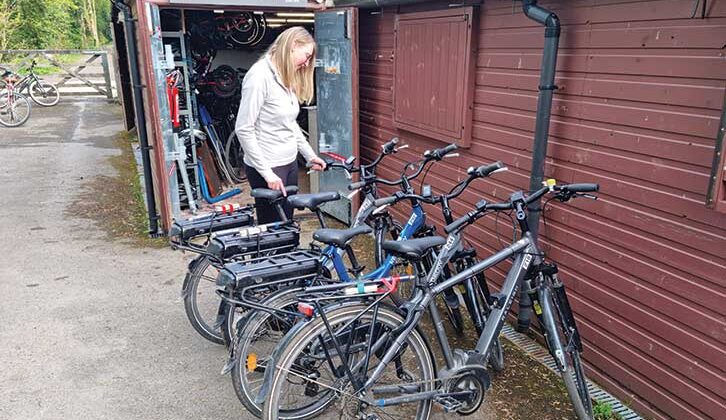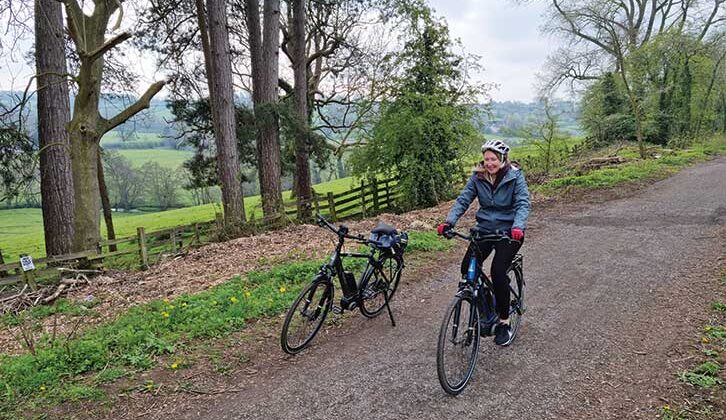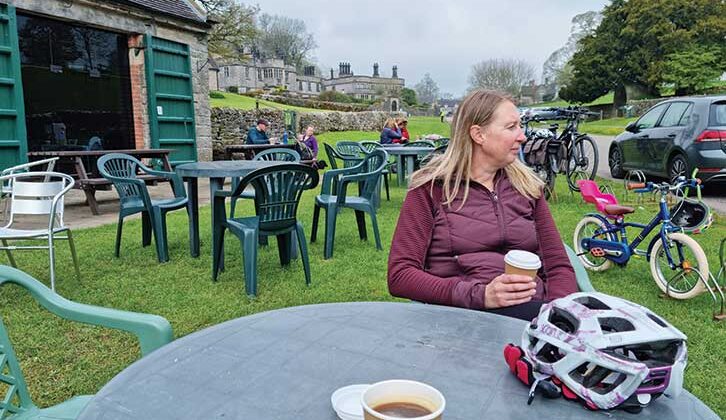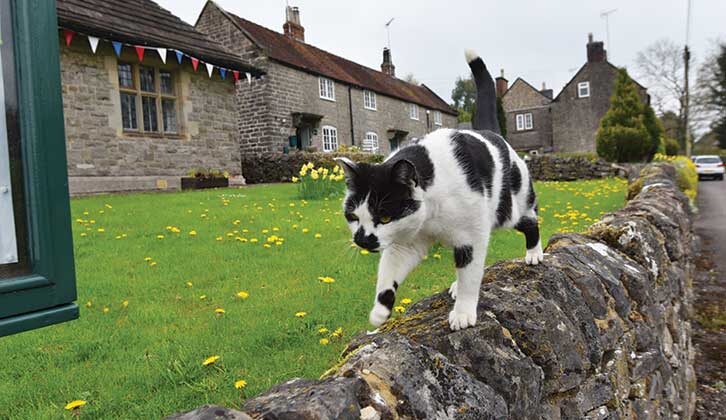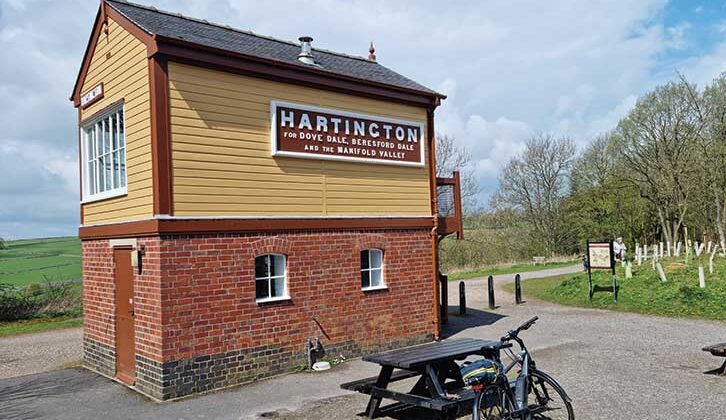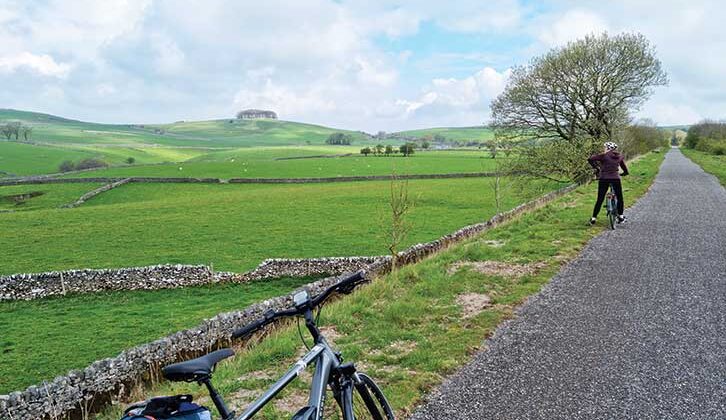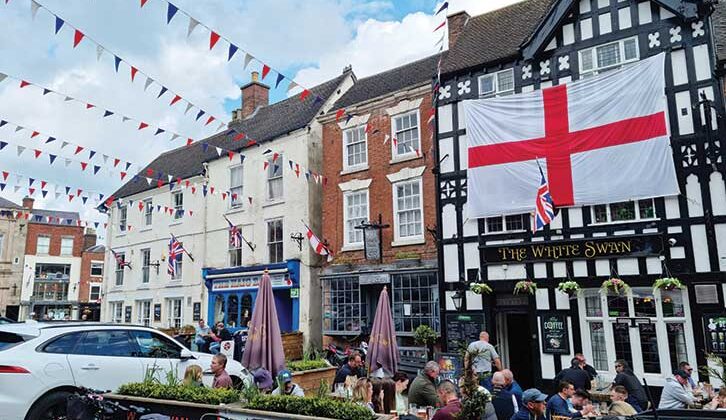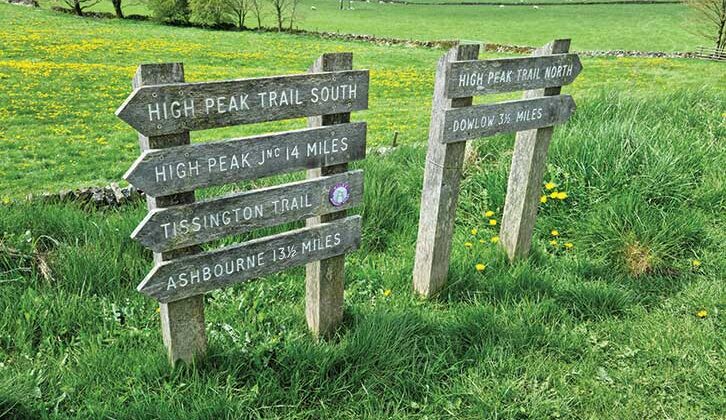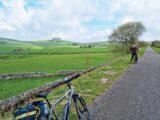Confession time. I am a member of a local cycling club and have done all sorts of daft challenges. These have ranged from cycling from coast to coast – on-road covering 113 miles in a day and a 250-mile off-road route over four days – as well as trips around the Scottish islands pedalling over the lumpier bits.
However, none of these events has been very relaxing and they usually involve a back-up vehicle, loads of logistics, helpers, trailers and secure garages. And bananas. Lots of bananas.
The thing is, on all of these events, you rarely get the time to actually enjoy the ride, because you’re focused on getting to the next checkpoint without losing a lung. It’s a challenge, rather than fun. For a family weekend away, that’s the last thing you want. I’d rather chill out, enjoy the scenery and sample some good food and drink.
Take it easy on an ebike
The good news is, there’s a way you can breeze along a cycle trail without having to load up your bike, mess about with pumps and chains, then worry if stuff is going to be stolen from the rack when you stop at services.
The simple solution is to hire a bike on your chosen cycle trail and sidestep the misery of burning legs and lungs, by opting for an electric bike rather than a conventional model.
Ebikes take all of the effort out of cycling and allow you to balance cyclists’ different abilities by varying the pedal assistance. You’ll generally find a cycling shop located near most popular UK cycling routes and they’re not that expensive to hire (you will need to leave a deposit on your credit card and provide proofs of your address, such as a driving licence or passport).
The only point to note is that it’s best not to mix a group of cyclists with electric and conventional bikes. This never works well and is a guaranteed recipe for friction – non-electric riders invariably get grumpy as you steam past them up the hills! So stick to all electric or nobody on electric.
The Tissington Trail
Dr Beeching deserves credit for creating lots of amazing cycling routes by axing so many local railways (although of course, that wasn’t his intention) and the Tissington Trail is a great example of how a repurposed former railway track can become a first-rate cycling route.
The Tissington Trail used to be the Buxton to Ashbourne railway line, which closed in 1967, and it starts in the pretty town of Ashbourne and then gradually carves its way through the splendid Derbyshire hills, before joining the National Route 54 cycling trail at Parsley Hay. This runs to the outskirts of Buxton before stopping near Dowlow Quarry. Interestingly, the quarry still uses one section of the original railway line to shift limestone.
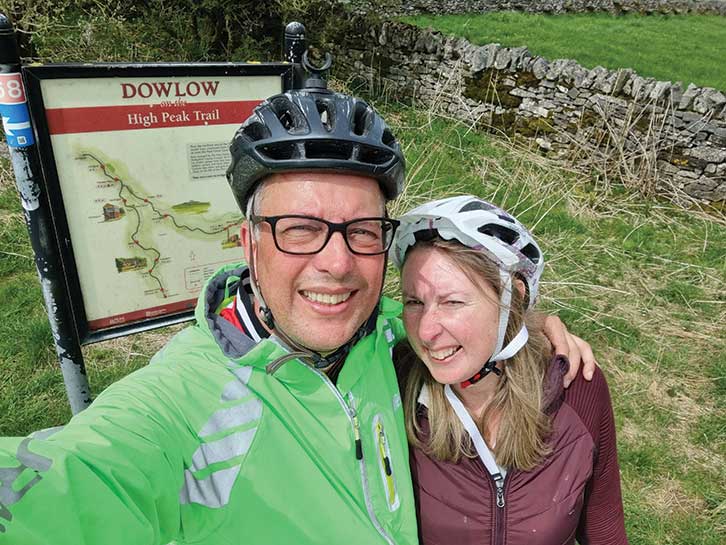
You can hire bikes from various shops directly along the route and there are lots of campervan campsites fringing the Tissington Trail, as well as plenty of tea shops, pubs and charming villages.
The area is very much geared up for cycling and walking, making for an easy, laid-back weekend. You don’t need to pack anything but clothing. Ashbourne has a great choice of supermarkets, too, with all budgets and tastes well catered for.
Hiring your bicycles for The Tissington Trail
There are two bike hire centres on the Tissington Trail – one at Ashbourne and another halfway up the trail in Parsley Hay. Both have car parks next to them, so you can leave your motorhome there while you go off for a pedal.
We opted to use the bike hire centre at Ashbourne, because it seemed more logical to start at one end of the trail and then pedal the whole thing. The car park there, which takes cash, not cards, cost £4.75 to park all day, and there were no height barriers to bother about.
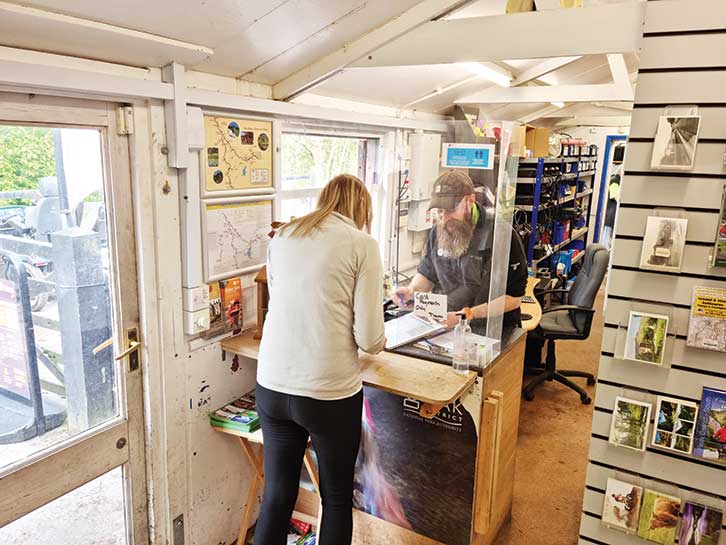
The good news about this cycle centre is that you can’t pre-book bikes, just turn up early and take your pick. This was music to my ears, as it means the Organised People can’t ruin it all for the Disorganised People by booking everything the year before (like they do with campsites…).
Simply arrive at the centre when it opens and you will have just as much chance of getting what you want. They have loads of ebikes, too, so it’s highly unlikely that they’ll run out.
Ebikes make things easy
After sorting out the paperwork with the helpful chap behind the counter (whose colleagues asked me to point out his similarity to a certain bearded member of rock band ZZ Top!) we were shown to our steeds for the day.
We were given a really good handover and full explanation of all the controls. It costs £38 to hire an ebike for the day (plus a deposit on your credit card), while non-electric bikes cost £19 for a day or £17 for four hours. It’s well worth spending a whole day on the trail, though, because there is so much to see and do along the way.
My wife, Helen, isn’t a particularly keen cyclist. Despite trying to encourage her onto her bike at home by equipping it with a super-plush saddle and absorbent tyres, she is highly resistant and it’s covered in a thick layer of dust, buried under gardening tools and gazebos.
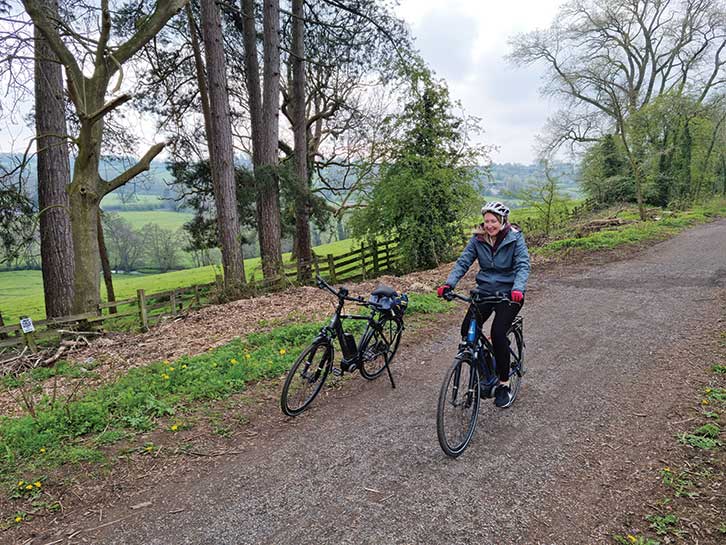
But the good news is, she took to the ebike immediately and was very soon enjoying the effort-free assistance that they provide.
The bikes we hired were Raleigh Motus ebikes. Helen’s was a blue one with an easy step-through frame, while I chose a grey one. They retail for around £2000, so hiring makes more sense for infrequent rides. Both use the Bosch crank motor, which adds extra effort to your pedal input.
Modern motors have very little drag compared to earlier versions of the ebikes and you can easily pedal them with the motor switched off. But with around 50 miles of range, there was little danger of running out of power on the 13-mile trail.
A digital display mounted on the handlebars allows you to toggle through the bike’s various power modes, ranging from Eco (low assistance), via Tour and Sport to Turbo (maximum assistance). The trick to maximising the range is to flick up and down the power modes and only use the higher modes for short durations, such as going up a steep hill. Given that the Tissington Trail was designed for locomotives, it doesn’t really have much in the way of gradients, but if you detour off for a pub or a tourist spot, Turbo mode takes all of the effort out of any steep sections.
Both bikes rode really well, allowing us to settle into a comfortable pedalling pace without having to break into a sweat. Eco mode was fine for me, while Helen toggled between Eco and Tour.
This is one of the brilliant things about ebikes for a group of mixed cycling abilities – you can all easily average the same speed, simply by using the power assistance at varying rates.
Tissington village
Heading out of Ashbourne, you pass the campsite of Callow Top on your left, a park that made it into our Top 100 Sites Guide 2023, where we reveal the best motorhome sites. Then, within 3.5 miles, you’ll find yourself at a car park by a bridge in Tissington village.
There’s a snack bar here (open seasonally) and toilets. Head out of the car park and up the small hill, turn left when you meet the road and you’ll pedal into the delightful village of Tissington. This historic hamlet offers plenty of interesting craft shops – including the wonderfully named ‘On a Wick & a Prayer’ candle shop – but the star attraction here has to be Tissington Hall.
This early 17th-century Jacobean mansion is Grade II listed and quite delightful, with a wide avenue running alongside and an ancient cobbled well. Today it offers holiday cottages and a wedding venue. Security guards at the entrance indicated it was out of our price range – Russell Crowe is reputed to have stayed there while filming Robin Hood.
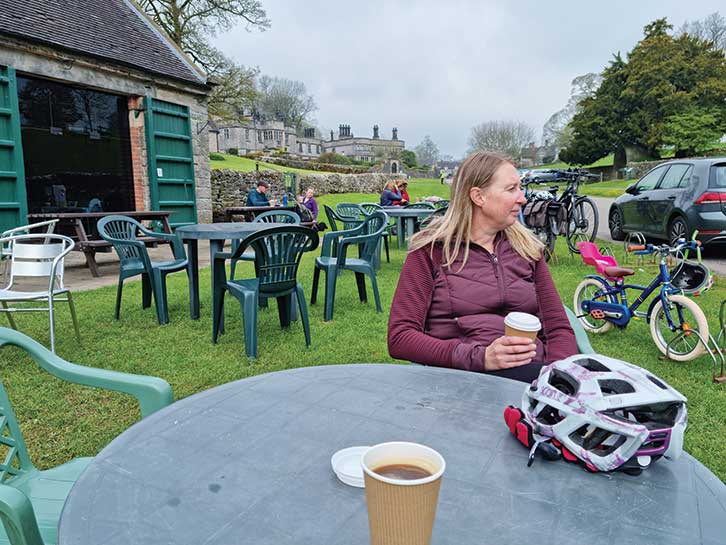
But forget about Hollywood A-listers – there is a more important stop. You want to make a beeline for Tissington Hall’s café, Herbert’s Fine English Tea Rooms. This is all set up for cyclists and walkers, with lots of outdoor seating and a great menu. This ranges from spicy bean burgers, soup and jacket spuds to wonderful Derbyshire oatcakes filled with cheese and ham. Or perhaps you’d rather have something sweet? Be warned, you will be tempted…
We resisted and opted for coffees (we’d not long breakfasted) and then, suitably caffeinated, ambled back to the trail, stopping to admire the village duck pond, where we met a very friendly local cat. He sidled up to me while I was busy with the camera, insisting on being fussed over before he obligingly posed for photos.
Heading to Hartington
As you pedal your way towards Buxton, the trail starts to elevate and the views begin to open up – the further up the trail you go, the better it gets. You’ll pass the former quarry of Rivendale on your right-hand side – now an excellent campsite.
We pedalled on and paused to have a drink and admire the view at Hartington. You’ll know when you arrive at Hartington, because of its historic signal box, which has been beautifully restored and overlooks a stunning vista.
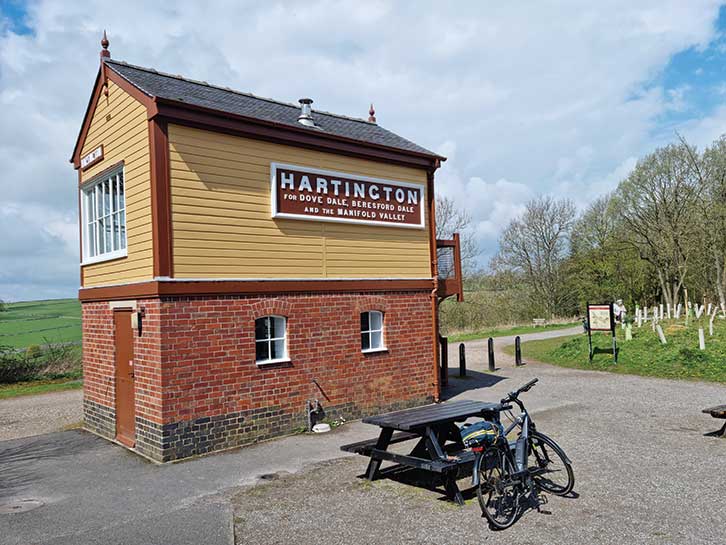
If you climb the steps to the box, you’ll see the colourful levers that controlled various bits of the track. I counted 15 and wondered how on earth you’d remember which to pull and when.
The Parsley Hay fork
Just before you get to Parsley Hay, you’ll find that the trail is joined by National Cycle Trail 54, also known as the High Peak Trail. Officially this is the end of the Tissington Trail – you’ll have covered about 13 miles by this time – but it’s worth pressing on to the end at Dowlow, which adds another 3.5 miles to the trip. Not least because there’s a great pub on the way!
At Parsley Hay, you’ll find another bike shop, where the staff helpfully added some air to the slightly soft tyre I’d acquired – and another café.
This was packed when we visited, so we opted to carry on up the trail to our lunch stop at The Royal Oak. Just as we started away from the café, an old stone building caught our eyes.
This turned out to be a Croatian Kazun, an Istrian stone shelter whose design dates back to the 18th century. So what on earth is a venerable Croatian edifice doing beside a historic English railway line?
Rather disappointingly, the answer is that it was actually built in 2013, as a gift to mark Croatia joining the EU. So it’s not in the least bit historic, because the stone for the construction was freshly dug from a local quarry.
Although you can carry on to Buxton – which is well worth visiting – the High Peak Trail itself peters out at Dowlow, near a limestone quarry.
Rather puzzlingly, there is no monument, or anything much else, to mark the end of the trail, other than a simple signboard displaying a map of the route. You kind of hope for some sort of fanfare or recognition of your achievement!
A celebration lunch
Heading away from Dowlow, after about 1.5 miles back down the trail, you’ll find The Royal Oak. It’s about another two miles away from Parsley Hay, in the tiny hamlet of Hurdlow.
It’s well worth walking or cycling up to the pub: the scenery on the way is expansive and a delight. The Royal Oak also operates a small campsite – I had stayed here before and I knew the food was excellent – so we opted to have lunch there.
This proved to be a good call, and as well as bike racks (everywhere along the trail is set up for cyclists), they provide plenty of covered outdoor seating and a beer garden.
The menu is stunning, with a great selection of real ales, although I was driving the camper later, so stuck to soft drinks. Food always tastes better after a little exercise, but even so, it was exceptional. The toasted sourdough topped with Cajun chicken, salad leaves and a Cajun cream sauce, with oak chips, tasted even better than it sounded, and the rest of the menu is equally mouthwatering. Helen opted for an amazing steak sandwich. Well worth the trip!
Time to head for home
The good thing about starting in Ashbourne and heading to Buxton is that you’re going slightly uphill all the way, so when you head back, it’s going to be mainly downhill.
This makes for easier pedalling, which is the way you want it as you start to tire in the saddle. It also means you’ll have no range anxiety with your ebike and can boost the power to make the trip back pretty much effortless.
We covered the 13 miles back to Ashbourne at a steady average of around 16mph and did it in one stint, getting there in under an hour.
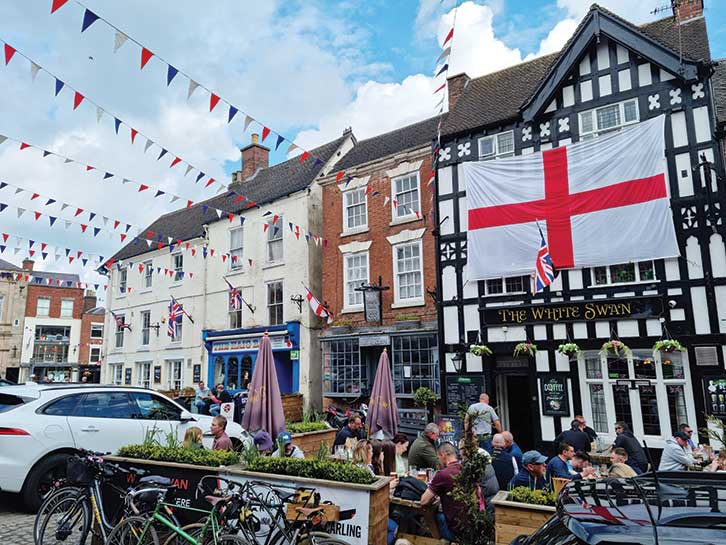
We’d already stopped to see most of the sights, so it was pleasant just to travel past everything and enjoy the cooling breeze.
We did stop when we saw some historic soldiers in a field. They were clearly battle re-enactment fans and we watched them happily marching up and down, shouting at each other, while a few local sheep eyed them with mild curiosity.
Back to the bike shop
All too soon, we were back at the bike shop in Ashbourne. Both ebikes still had about 20 miles of range left in their batteries, so the 34-mile round trip hadn’t been that intensive for them. It was great, simply to hand them back and not have to worry about chargers, oiling chains or strapping them to a bike rack.
This is definitely the easiest way to cycle – all we brought with us was our helmets, gloves and clothing (and you don’t even have to do that – they can provide helmets). Helen loved the ebike, which is all the good bits of cycling – the wind in your hair, the superb scenery – without the misery of panting up hills.
Whether you’re an experienced rider or a novice, you can’t go wrong on the Tissington Trail: it’s geared up for cyclists, so it’s a great day out.
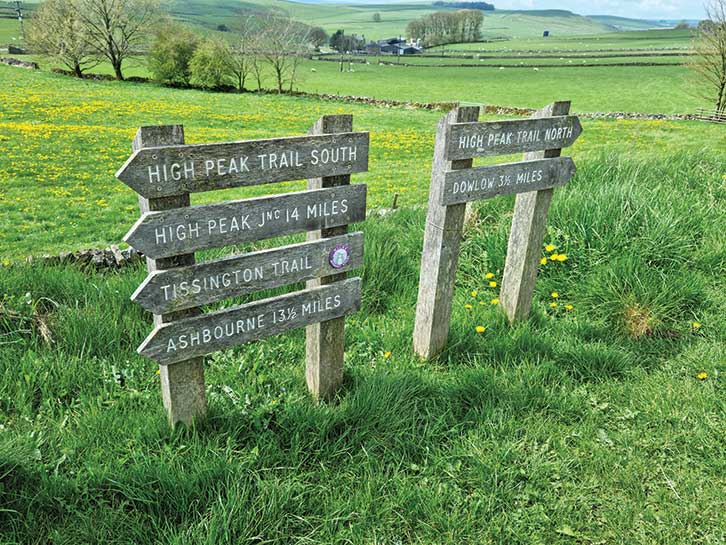
The cherry on top is that it’s bookended by the towns of Buxton and Ashbourne. Buxton is a fine Victorian spa town with good shopping and the Pavilion building and gardens, while Ashbourne offers tea rooms, pubs and restaurants, together with an excellent selection of antique shops.
Looking for some more touring inspiration? See how Susan and Ro Taylor found their tour to Stratford-upon-Avon, while Cirencester proved to be the perfect base for Susan Taylor to get to know her new motorhome.
Planning a tour for the Tissington Trail
Way to go
Head to Ashbourne on the A52 from Stoke-on-Trent in the west or from Derby in the east.
When to go
Ideally, you want to visit sometime between spring and autumn – in winter the hills make the route cold and slippery. The bike hire shops are generally open from mid-February to late October.
Where we stayed for the Tissington Trail
The Duke of York
Pomeroy, Flagg, Derbyshire SK17 9QG, thedukeofyorkpomeroy.co.uk Tel 01298 83545
This Robinson’s pub serves excellent ale and a delicious menu (you’ll need to book because it gets very busy with in-the-know locals). The campsite is modern and offers stunning views.
Find out more
Take a look at how Mike Thomas can use his campervan to enjoy Brisca Formula 2 stock car racing.
If you’ve enjoyed reading this article, why not get the latest news, reviews and features delivered direct to your door or inbox every month. Take advantage of our brilliant Practical Motorhome magazine SUBSCRIBERS’ OFFER and SIGN UP TO OUR NEWSLETTER for regular weekly updates on all things motorhome related.
